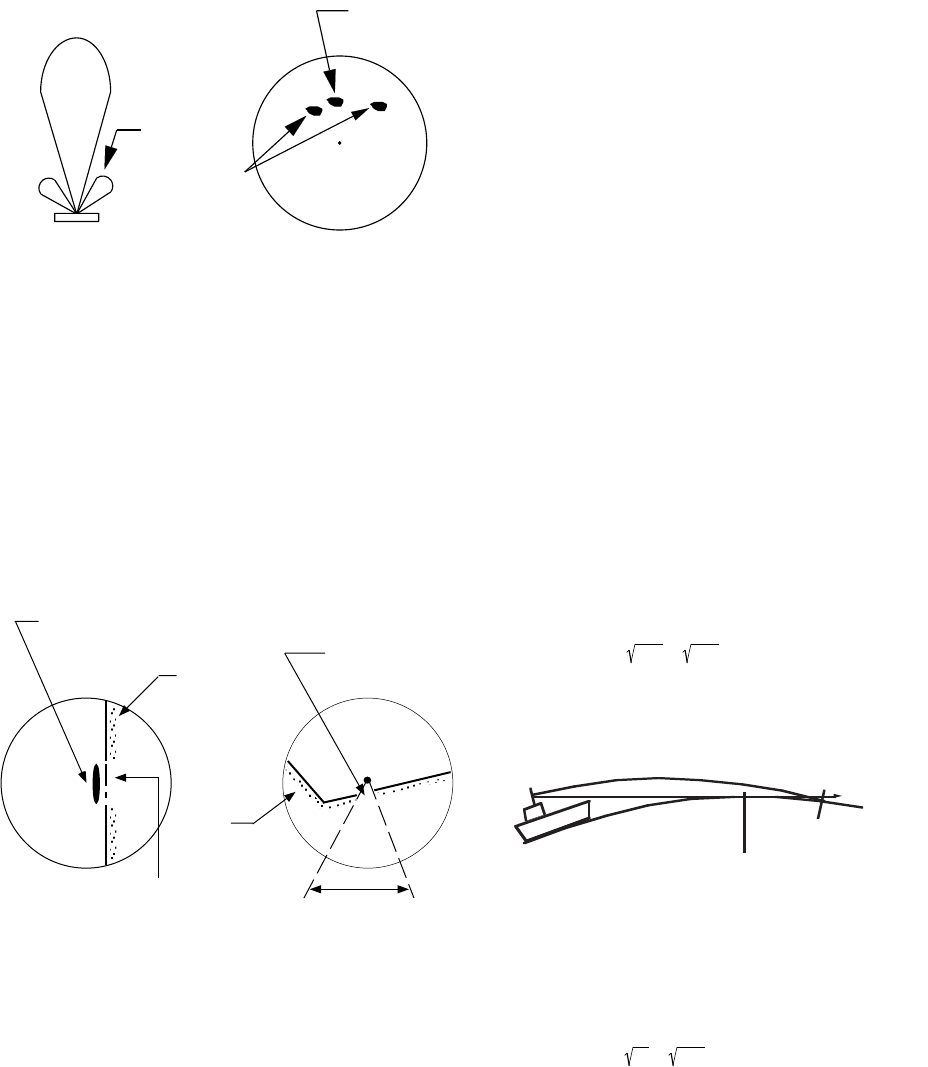
2–3
Side-lobe echoes
Small amounts of rf radiation on each side of the
main beam are called “side-lobes.” If a target ex-
ists where it can be detected by the side-lobes as
well as the main-lobe, the side-lobe echoes may
be represented on both sides of the true echo at
the same range, as shown in Figure 2-6.
Side-lobes show usually only at short ranges and
from strong targets. They can be reduced through
careful reduction of the sensitivity or proper ad-
justment of the A/C SEA.
Figure 2-6 Side-lobe echoes
Blind and shadow sectors
Funnels, stacks, masts, or derricks in the path of
antenna may reduce the intensity of the radar
beam. Within the blind sector small targets at close
range may not be detected while larger targets at
much greater ranges may be detected. See Figure
2-7.
Figure 2-7 Blind and shadow sectors
Spurious
target
True echo
Main-lobe
Side-lobe
Scanner
2.5 Minimum and Maximum
Ranges
Minimum range
The minimum range is defined by the shortest
distance at which, using a scale of 1.5 or 0.75 nm,
a target having an echoing area of 10 m
2
is still
shown separate from the point representing the
antenna position.
It is mainly dependent on the pulselength, antenna
height, and signal processing such as main bang
suppression and digital quantization. It is a good
practice to use a shorter range scale as far as it
gives favorable definition or clarity of picture. The
IMO Resolution A. 477 (XII) and IEC 936 require
the minimum range to be less than 50 m. All
FURUNO radars satisfy this requirement.
Maximum range
The maximum detecting range of the radar, Rmax,
varies considerably depending on several factors
such as the height of the antenna above the water-
line, the height of the target above the sea, the
size, shape and material of the target, and the at-
mospheric conditions.
Under normal atmospheric conditions, the maxi-
mum range is equal to the radar horizon or a little
shorter. The radar horizon is longer than the opti-
cal one by about 6% because of the diffraction
property of the radar signal. The Rmax is given in
the following equation.
R
max
= 2.2 x
(
h1 + h 2
)
where Rmax: radar horizon (nautical miles)
h1: antenna height (m)
h2: target height (m)
Radar horizon
Optical horizon
For example, if the height of the antenna above
the waterline is 9 meters and the height of the tar-
get is 16 meters, the maximum radar range is;
R
max
= 2.2 x
(
9 + 16
)
= 2.2 x
(
3 + 4
)
= 15.4 nm
Vessel taller
than wharf
Wharf
Wharf
Blind sector
(no echo)
Mast, etc. in path
of radar beam
Size of blind sector
depends on target
size and range.


















